The idea of Laria persisted until one day I decided these fragments might come together to make a decent story, maybe even a novel. But where to start?
There are many options for online tools for writers to plan out their stories, keep track of plot points, characters, and timelines. A few I’ve seen are Milanote, Reedsy, Scrivener, Dabble, and Campfire. Some are free while others cost money, but they’re great for those writers who like everything neat and tidy in one space.
I’m anything but tidy.
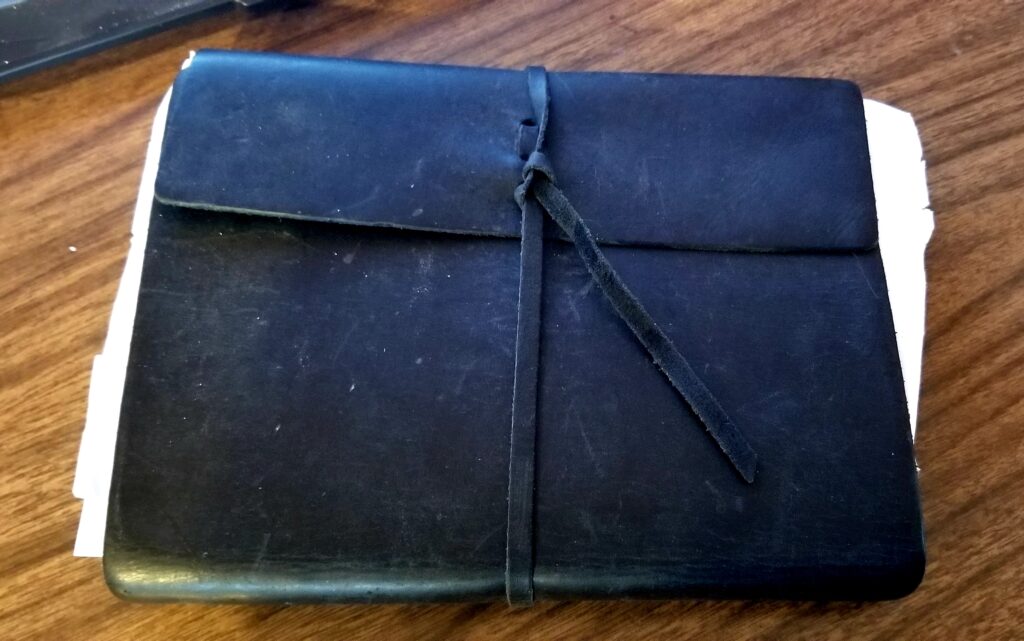
I prefer to handwrite all of my ideas, outlines, and inspirations in a writing journal.
I start with a rough outline of the main plot, including how it begins, key events, and the ending. Sometimes I’ll write out certain scenes so I won’t lose the image I have in my head. Some authors will write more detailed outlines, including chapter outlines, but I prefer to fill in the blanks with the flow of the story. I’ve been pleasantly surprised sometimes how the story unfolds without each detail planned out. Admittedly, this can make more work for me since I have to make a note so I don’t forget (it’s horribly embarrassing to kill off a character and forget). However, I prefer the organic development of the characters and story and sit back and enjoy the ride.
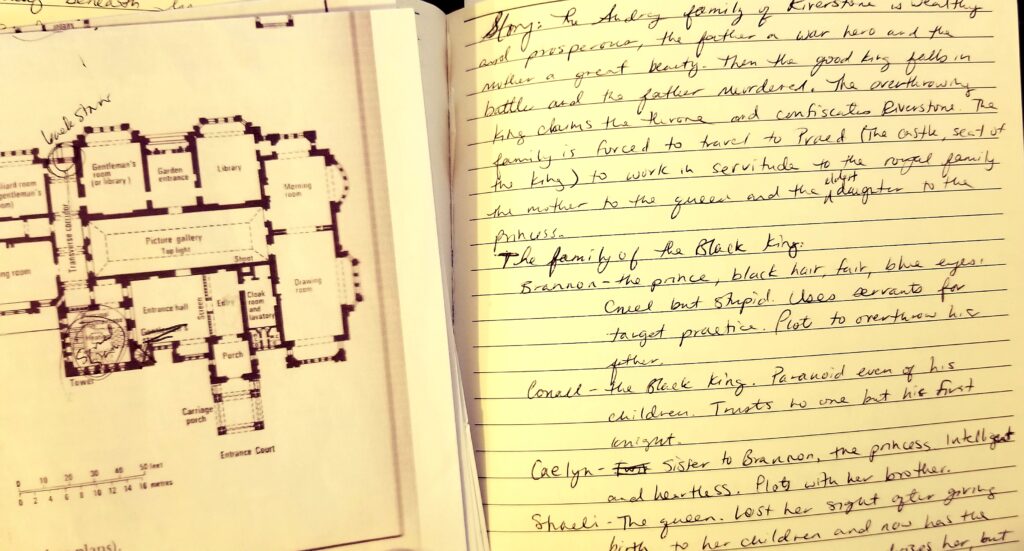
The exception to this rule would be when you’re writing a story with mystery and intrigue. In order to make the plot flow, map out the secrets and lies, plans and schemes, and big reveal so it makes sense in the end. When I wrote my first draft, the clues seemed obvious to me, but the “aha” scene came out of nowhere for my reader. Find a balance between spelling things out and being too vague. Drop hints throughout the story wherever possible. This can be difficult when writing a first person POV–like Laria–where the reader only hears/sees what the MC does. Listening at doors, snooping, and pretending to be deaf and mute allowed Laria to pick up on clues to plots. Make sure to keep track of the pieces so the puzzle in the end isn’t a big mess.
Another part of the early process is character sketches. I’ll write out a description, family connections, personality traits, quirks, likes and dislikes, and anything else I feel is relevant to the story. Family trees work great for keeping track of multiple characters, especially when you’re planning a series. I use Family Echo, which makes it easy to isolate a particular character to see their lineage and descendents. This is especially useful when writing a series spanning multiple generations. I can keep track of each character’s family quickly and there’s no limit to how many children, grandchildren, etc that can be added. I’ve tried doing family trees by hand, and it always turns into a mess whenever I’ve tried squeezing in multiple characters. I won’t be posting an example of my family tree due to spoilers until the release of book two. Another fun part of researching characters is scrolling through faces to find a fit. At least that’s what I tell my husband when I’m drooling over Richard Armitage photos.
I did a lot of Google image searches to help with descriptions of places, including Praed Castle and Riverstone. This is especially helpful in making descriptions historically accurate. Though it’s a fantasy, The Rise of Riverstone is set during the early/mid-16th century, and it was important for me to keep the details period appropriate. This included clothing, word usage, decor, food, and some customs. I consulted Merriam-Webster for questionable words to make sure they were around in the 16th century. I researched how far a horse travels in a day, types of seeds that grow in specific soils, climate specific fruits, vegetables, and flowers.
And let’s not even talk about the search history that will put me in prison.
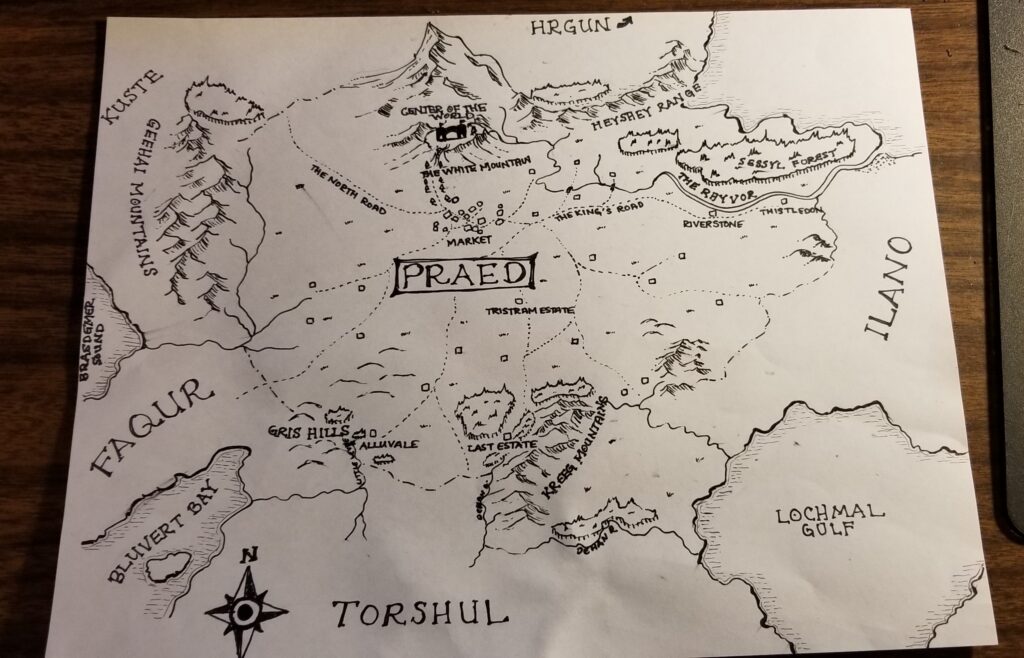
Worldbuilding is an important part of your story, but don’t get bogged down in it. Draw a simple map, work out the magic system (if there is one), and write out a relevant historical timeline.
I don’t care a fig about a battle that happened 300 years ago, unless for some reason it’s relevant to NOW. If it is, make it brief. What is the basis for your peoples’ culture? Religious beliefs? These are important factors that will drive your story and should be worked out in advance.
This being said, I did end up writing a 1500 year history of Praed after finishing The Rise of Riverstone.
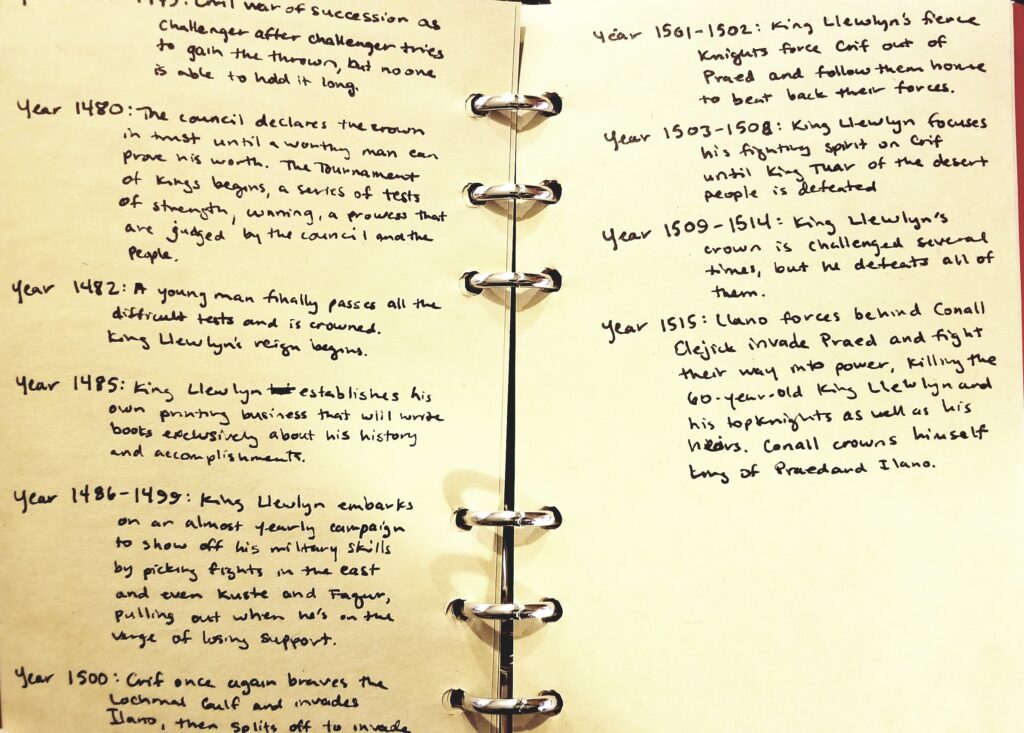
I also created a calendar (which I never used). And I’m constantly drawing more and more detailed maps. These are fun side projects to concentrate on for bonus material and to keep you busy while you’re waiting to get your manuscript back from your editor.
WRITE. WRITE. WRITE.
Do your best to keep track of plot developments and character interactions. It really sucks as a reader to be impacted by a scene and have it end up not relevant or never addressed. Don’t forget to make it make sense and tie up loose ends. Your beta readers will help if you make a mistake. They love pointing out your flaws.
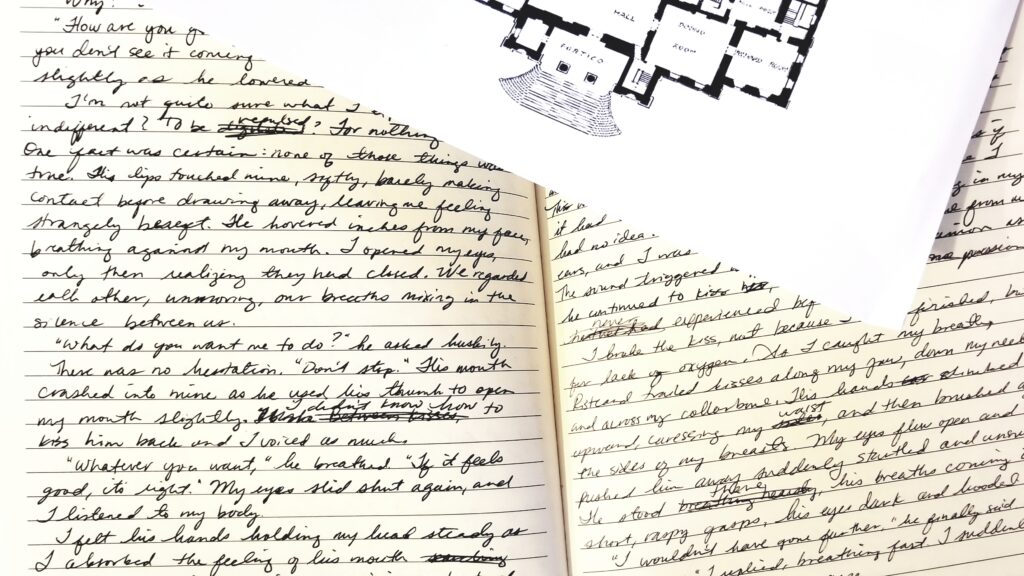
Some writers set up writing goals per day, whether it’s word count or time spent writing. This helps to hold you accountable, but it doesn’t work with every schedule. My goal was to write every day I wasn’t at my regular job, particularly when the kids were at school so the house was quiet. Ish. Some people say write every day, but I say write when it’s right. There’s no way I’m getting quality work done if I’m stressed or busy. Get yourself a workspace and write when the mood strikes. Don’t worry about editing as you go. Your first draft is a hot dumpster fire. They always are. The important part of a first draft is getting it done.